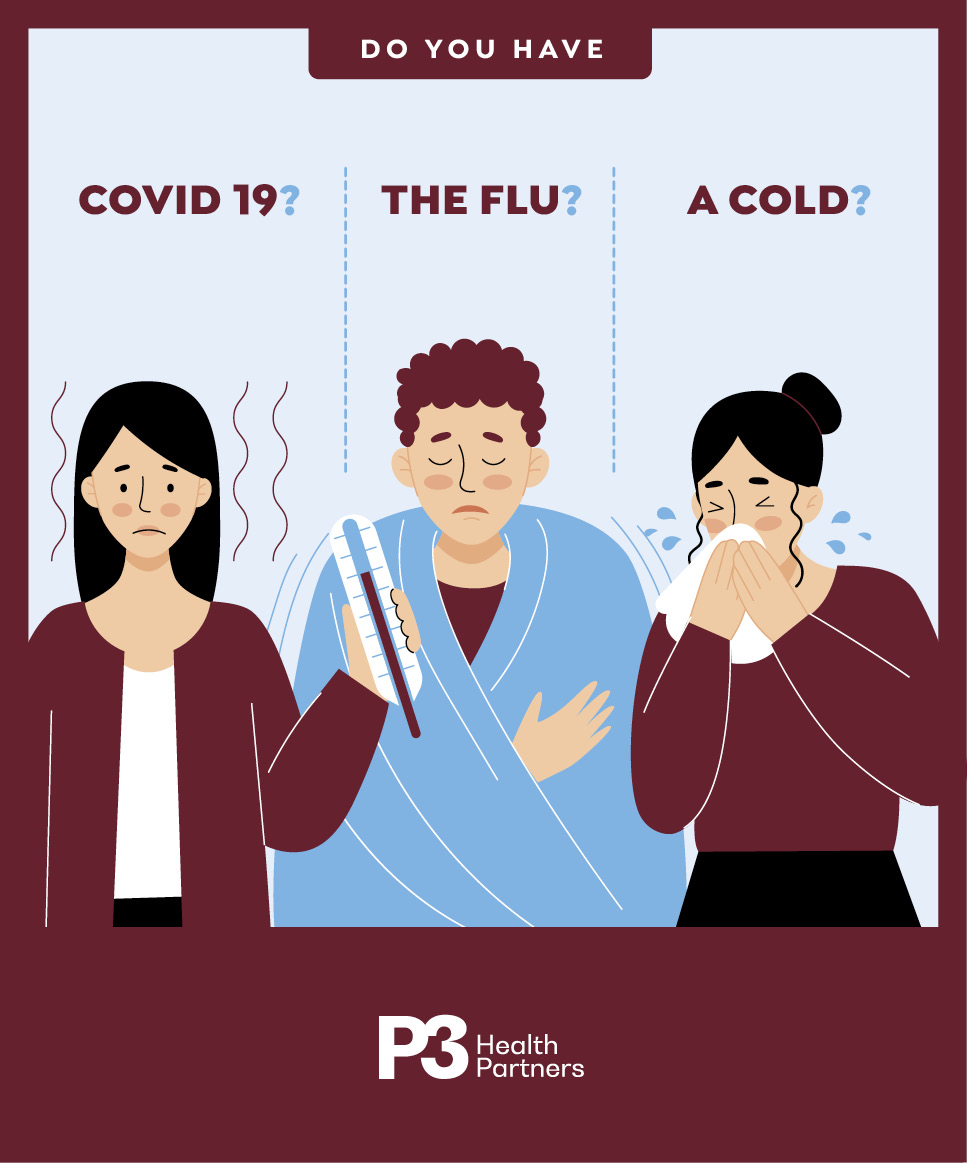With all of the different respiratory symptoms and illnesses we see this time of year, it’s easy to become overwhelmed with concerns about what is causing them and if we are contagious. COVID-19, the common cold, seasonal allergies, and the flu share many similar symptoms. That often leaves the patient asking themselves, “Is it COVID-19?” It’s important to recognize the differences in symptoms these different diseases cause as well as how to treat and prevent the spread of COVID-19.
COVID-19, the flu and the common cold are all caused by viruses that are spread in similar ways; however, there are some differences:
| Sign or Symptom | COVID-19 | Cold | Flu | Allergies |
| Cough | Usually (dry) | Usually | Usually | Sometimes |
| Muscle Aches | Usually | Sometimes | Usually | Never |
| Tiredness | Usually | Sometimes | Usually | Sometimes |
| Sneezing | Rarely | Sometimes | Usually | Usually |
| Sore Throat | Usually | Usually | Usually | Rarely |
| Shortness of Breath | Usually | Sometimes | Usually |
Rarely
|
| Runny or Stuffy Nose | Usually | Usually | Usually | Usually |
| Fever | Usually | Sometimes | Usually | Never |
| Diarrhea | Sometimes | Never | Sometimes | Never |
| Nausea or Vomiting | Sometimes | Never | Sometimes | Never |
| New Loss of Taste or Smell | Usually | Sometimes | Rarely | Sometimes |
| Eye Irritation | Sometimes | Rarely | Rarely | Usually |
Seasonal allergy symptoms typically appear when the weather starts to warm and trees start to bloom. Most people with seasonal allergies can manage them well with over the counter remedies. Seasonal allergies don’t usually cause serious complications, like shortness of breath, unless the person has an underlying condition, such as asthma.
Symptoms of a common cold usually appear within 1-3 days after exposure to a cold-causing virus. While there is no current cure for cold-causing viral illnesses, most can be managed symptomatically with over-the-counter pain medications and cold remedies. The common cold is usually harmless, resolving on its own within 10 days.
Flu-like symptoms usually begin about 1-4 days after exposure to an influenza virus and COVID-19 symptoms generally appear two to 14 days after SARS-CoV-2 exposure. Some people with COVID-19 or the flu will experience only mild symptoms, while others may experience more serious, lengthy disease. Both COVID-19 and the flu can be treated with anti-viral medications prescribed by a provider. Unlike the flu, COVID-19 also has the potential to cause more serous symptoms such as blood clots.
Vaccines are our best chance at fighting COVID-19 or the flu. Both will reduce your risk of contracting the disease and if you do happen to fall ill from either virus, the vaccine can help reduce the severity of disease and risk of serious complications.
Another great way to avoid viral illness is to practice good respiratory and hand hygiene as well as physical distancing.
- Wear a mask indoors in public and outdoors in crowded areas or when in close contact with others
- Avoid close contact (less than 6 feet) with anyone outside your immediate household
- Wash your hands frequently with soap and warm water for at least 20 second or use 60% alcohol-based hand sanitizer when soap and water aren’t available
- Avoid crowded areas whenever possible
- Avoid touching your face, especially your eyes, nose or mouth

